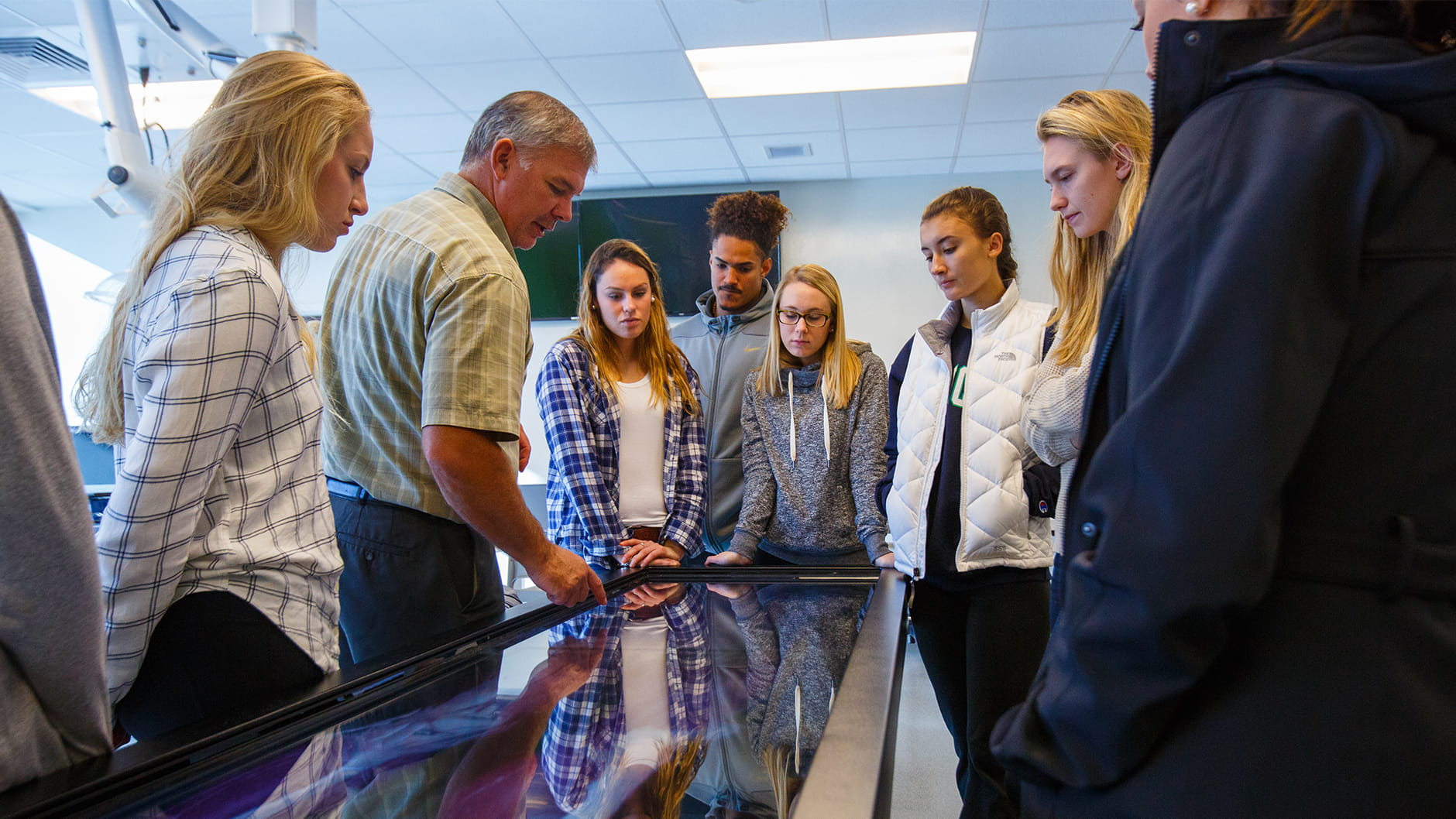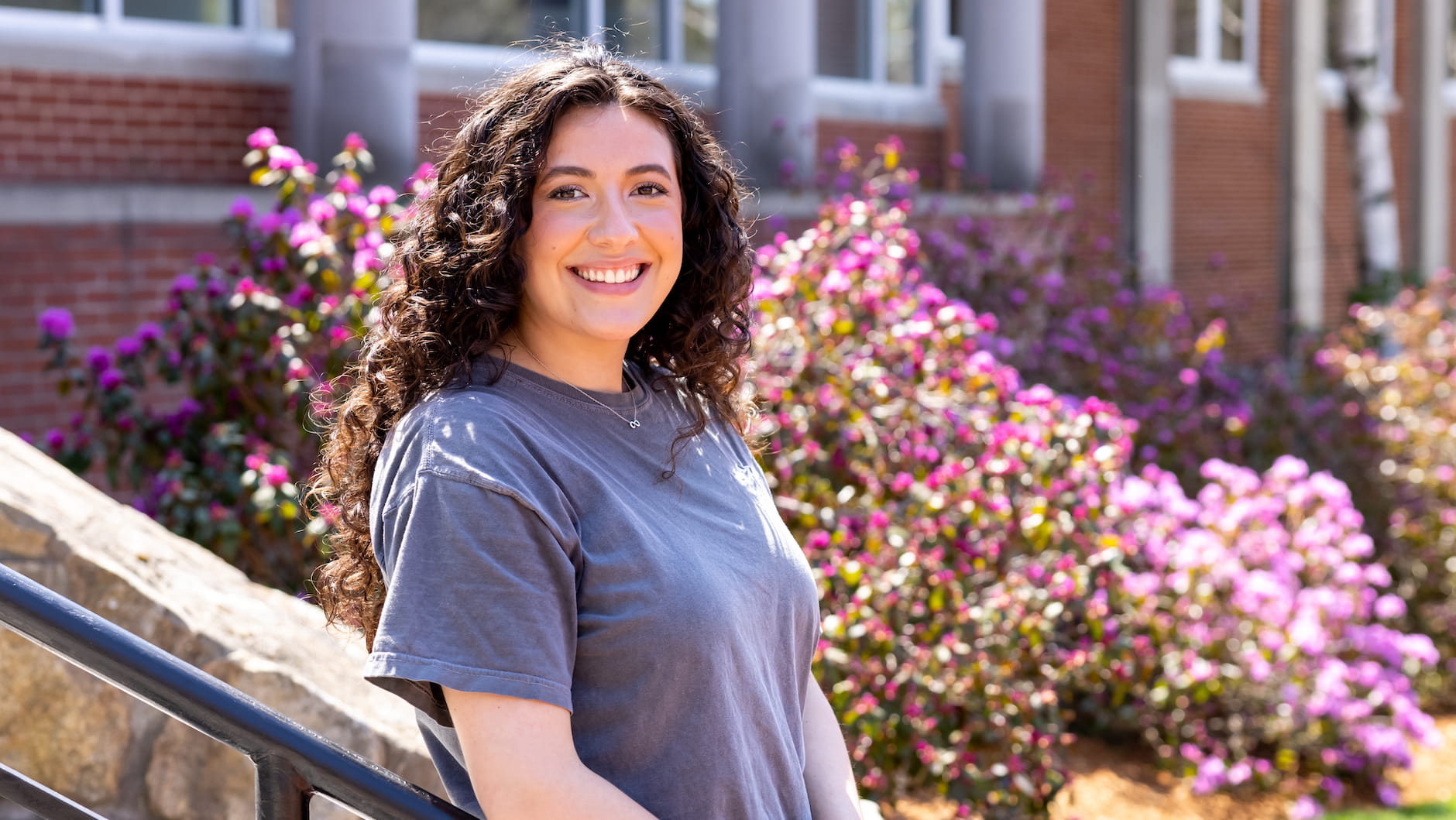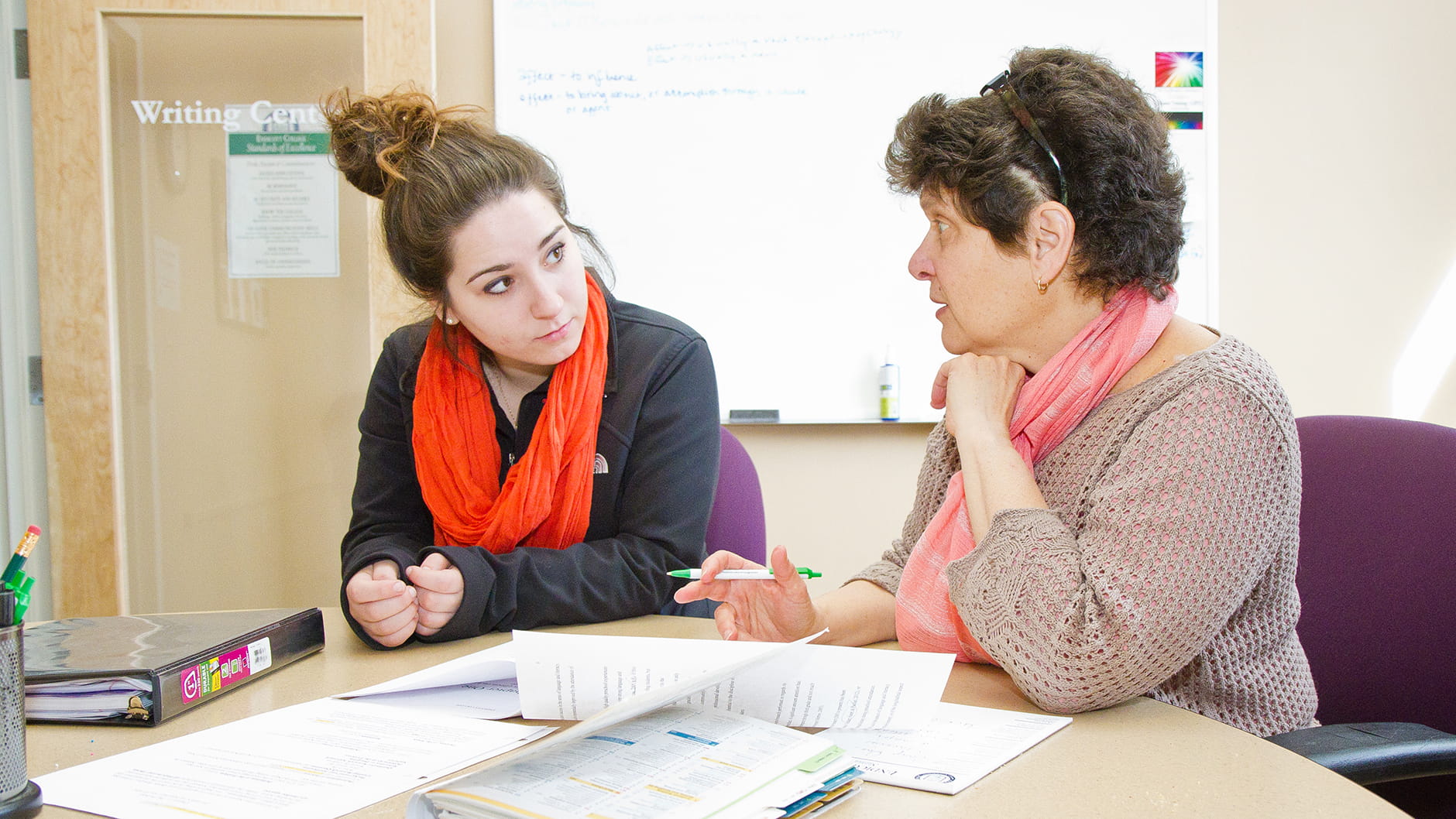Academics
Read Time: … min
To ensure the strength and continued improvement of our academic curriculum, Endicott College uses a combination of course evaluations and assessment techniques to gain essential feedback on the performance of our faculty and students, as well as the efficacy of our courses. At the end of each course, our students are asked to provide vital feedback via a series of evaluations. These online surveys allow our students to share their direct perspectives with members of the faculty and administration, a process that is used to enhance our course across a variety of fields.
The College engages in additional program assessment processes, which evaluate what we call “student learning outcomes,” which should be thought of as the goals set for each course. These outcomes are measured across at the completion of each course and across each major-specific program. In a broader sense, each school has learning outcomes as well. For example, outcomes have been developed for a single class, let’s say—Marketing (BUS 200), as well as for the marketing program, and for the Curtis L. Gerrish School of Business as a whole. Learning outcomes are assessed at each degree level, from associate to bachelor’s, master’s to doctoral.
These initiatives are overseen by Dr. Paul Antonellis, Endicott’s Director of Assessment & Special Projects, who recently presented at the ninth annual virtual conference held by the Assessment Network of New York (ANNY). Antonellis discussed the topic of “Lessons learned: Curriculum map as an assessment tool.” He shared the process that schools and programs can use for curriculum mapping as an assessment tool, what worked well, challenges encountered, and recommendations going forward. Endicott is being recognized nationally as a leader in curriculum mapping and the profound work being conducted in the area of assessment.
We asked Dr. Antonellis to weigh in on the College’s assessment and evaluation process. He says, “Think of the end of course evaluation as a form of continual learning for the program, course, faculty, and College administration. The end of course evaluation allows the student to have a voice in the process of how to improve the course, classroom environment, teaching style, instructor feedback, course content, workload, exploring new ideas, and textbooks. We generally ask for a detailed response on the ‘most helpful aspect of the course,’ it would be ‘helpful if…’ and ‘next time this course runs, I’d suggest’ for narrative comments. The end of the course evaluation is just one data point that we can use to enhance the course, teaching, and environment, but it is not the only data that is considered when making adjustments.”
The data collected through these evaluation and assessment procedures has a wider use than course improvement. Antonellis explains that in certain cases, outside accrediting boards will want to review the end of course evaluations data and make recommendations to each School on areas of improvement for student learning. Additionally, the students’ end of course evaluations can even play a role in faculty hiring and promotions. For the most effective use of the data collected, each course needs to be evaluated to ensure that that the data is complete across the board, and not skewed.
Antonellis adds, “The submitted evaluations are anonymous and contain no identifying data; the faculty are not allowed access to the data until after they submit course grades. In general, the response rates for end of course evaluations can range from 50–65%. The system that Endicott uses for collecting and managing course/program evaluations allows the individual faculty member to provide a self-reflection written response to the administration (chair, deans, provost, president) regarding things they may change in the course or the style of teaching moving forward.” Additionally, he notes, “The course evaluations can be used in a holistic assessment process that might include peer observations, self-reflection, and review of course materials.”
The assessment processes utilized by the College are essential to the continued improvement of the student experience here at Endicott and provides students, faculty, and administration with a voice in promoting change and ensuring progress.
The College engages in additional program assessment processes, which evaluate what we call “student learning outcomes,” which should be thought of as the goals set for each course. These outcomes are measured across at the completion of each course and across each major-specific program. In a broader sense, each school has learning outcomes as well. For example, outcomes have been developed for a single class, let’s say—Marketing (BUS 200), as well as for the marketing program, and for the Curtis L. Gerrish School of Business as a whole. Learning outcomes are assessed at each degree level, from associate to bachelor’s, master’s to doctoral.
These initiatives are overseen by Dr. Paul Antonellis, Endicott’s Director of Assessment & Special Projects, who recently presented at the ninth annual virtual conference held by the Assessment Network of New York (ANNY). Antonellis discussed the topic of “Lessons learned: Curriculum map as an assessment tool.” He shared the process that schools and programs can use for curriculum mapping as an assessment tool, what worked well, challenges encountered, and recommendations going forward. Endicott is being recognized nationally as a leader in curriculum mapping and the profound work being conducted in the area of assessment.
We asked Dr. Antonellis to weigh in on the College’s assessment and evaluation process. He says, “Think of the end of course evaluation as a form of continual learning for the program, course, faculty, and College administration. The end of course evaluation allows the student to have a voice in the process of how to improve the course, classroom environment, teaching style, instructor feedback, course content, workload, exploring new ideas, and textbooks. We generally ask for a detailed response on the ‘most helpful aspect of the course,’ it would be ‘helpful if…’ and ‘next time this course runs, I’d suggest’ for narrative comments. The end of the course evaluation is just one data point that we can use to enhance the course, teaching, and environment, but it is not the only data that is considered when making adjustments.”
The data collected through these evaluation and assessment procedures has a wider use than course improvement. Antonellis explains that in certain cases, outside accrediting boards will want to review the end of course evaluations data and make recommendations to each School on areas of improvement for student learning. Additionally, the students’ end of course evaluations can even play a role in faculty hiring and promotions. For the most effective use of the data collected, each course needs to be evaluated to ensure that that the data is complete across the board, and not skewed.
Antonellis adds, “The submitted evaluations are anonymous and contain no identifying data; the faculty are not allowed access to the data until after they submit course grades. In general, the response rates for end of course evaluations can range from 50–65%. The system that Endicott uses for collecting and managing course/program evaluations allows the individual faculty member to provide a self-reflection written response to the administration (chair, deans, provost, president) regarding things they may change in the course or the style of teaching moving forward.” Additionally, he notes, “The course evaluations can be used in a holistic assessment process that might include peer observations, self-reflection, and review of course materials.”
The assessment processes utilized by the College are essential to the continued improvement of the student experience here at Endicott and provides students, faculty, and administration with a voice in promoting change and ensuring progress.


